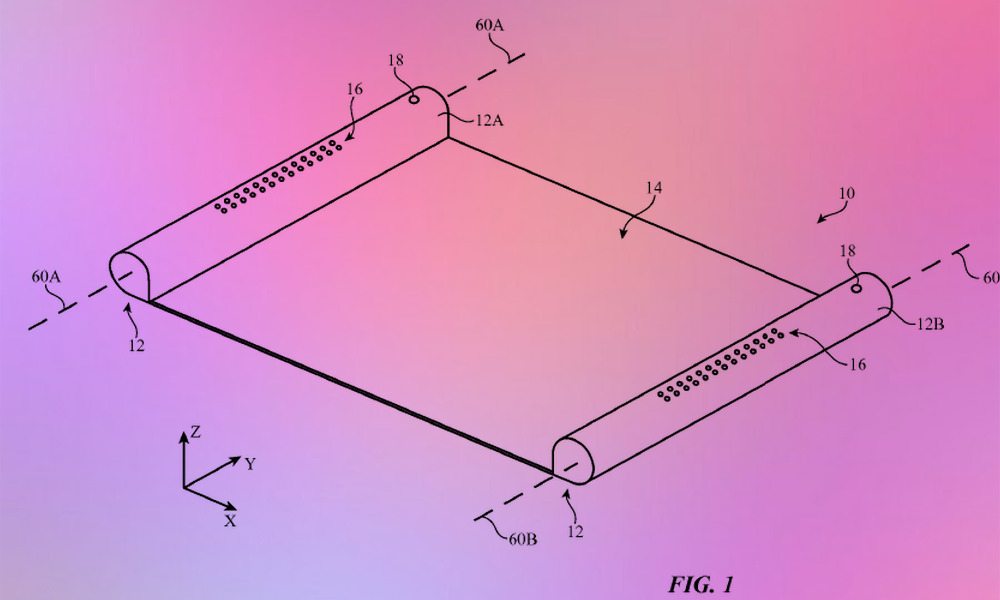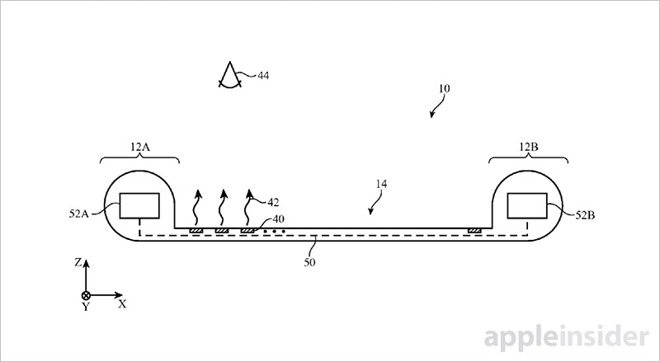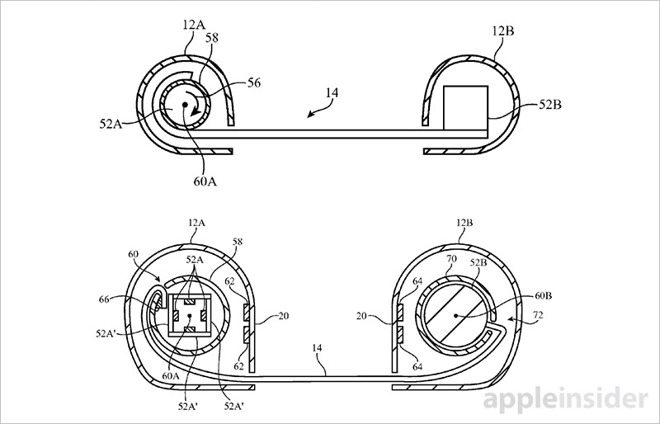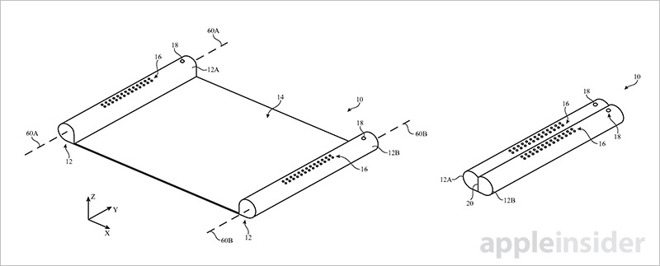‘Scroll’ iPhone Design Patent Is the Quirkiest We’ve Ever Seen

Toggle Dark Mode
Apple’s tendency to patent more in the way of intellectual property than it produces in the form of tangible products is well-documented — but the company’s latest patent application details a design so futuristic in nature, it almost makes us wonder what the team up in Cupertino is thinking these days.
The patent, which was filed back in August of 2015 but published by the U.S. Patent & Trademark Office on Thursday morning, is defined only as “Electronic devices with retractable display” which goes on to outline what can most appropriately be described as a “futuristic digital scroll” according to Patently Apple.
Exclusively a design patent, it goes on to describe a mobile device, such as an iPhone or iPad, constructed of a flexible OLED display that’s capable of being coiled and uncoiled inside of two hollow outer casings, as you can see in the images below.
The cylindrical, ‘barrel-shaped’ housings are said to encompass almost all of the device’s components, including cameras, processors, flash storage, and circuit boards, as well as provide ample space for the display to be rolled up like a tortilla inside of them — while the casings can be constructed from a number of materials, such as aluminum alloy, glass, ceramic, carbon fiber, or plastic.
The device’s audio components — i.e. microphones and speakers — could be aligned with fabricated ‘micro-perforations’ in the housings, while the patent also shows the possibility of having two separate camera modules, one mounted on each elongated chassis, which would allow the device to capture stereoscopic images using multiple lenses, similar to the iPhone 7 Plus’ dual-lens camera — only spread farther apart from one another.
Apple’s patent also describes how these casings are intentionally designed to allow the OLED display to curl and uncurl itself around a stationary array of internal components (Figure 52 A/B). When unfurled or retracted, the display would travel through small slits positioned along each casing chamber, and would lock into place with the help of “stationary slats.” When snapped back into a closed state, these slats would then bend appropriately to accommodate the display, allowing it to coil back into place with the help of a spring-assisted mechanism.
Once back in a coiled state, the two housings would then be held together with the aid of small magnets, so as to protect the OLED panel from being damaged.
As interesting as this design may seem, it’s important to note that seeing a device along these lines from Apple would be both unrealistic, and factoring in supply chain restraints, more than likely implausible, at least for the time being.
Although Cupertino has previously patented other designs for a bendable iPhone featuring a flexible OLED display, the company also appears to be set on the more conventional, contemporary design themes of its current iPhone and iPad offerings — although the future will almost certainly see that those otherwise ghastly bezels are whittled down substantially.









